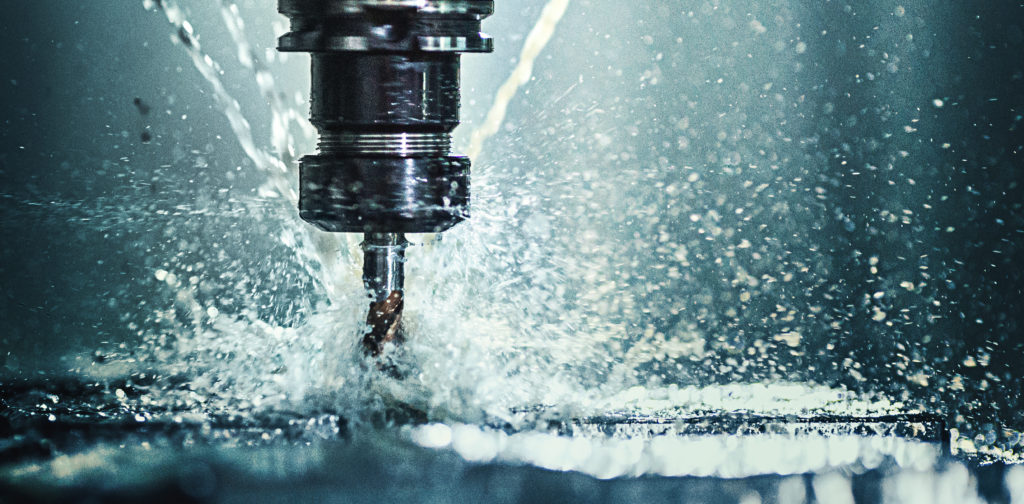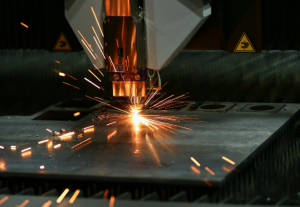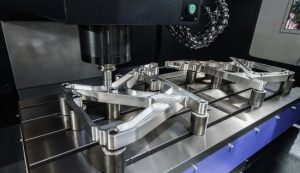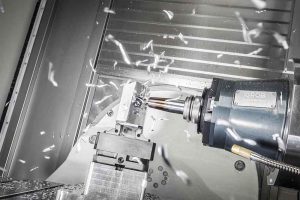3-axis CNC machines control movements in three directions (X, Y, and Z), suitable for simpler parts. 5-axis machines offer additional rotations around two of those axes, allowing for complex shapes and undercuts. Choose based on the complexity and precision required for your projects.
3-Axis Cnc Machines
This enables a 3-axis CNC machine to move and control the part on three axes simultaneously. The machines are programmed to move the cutting tool in X,Y and Z linear axes, making them perfect for machining jobs that do not require a piece of rotating. They are ideal for applications that need mainly straight cuts and can offer a high level of production efficiency when used to produce flat or prismatic components.
In Industry
Some of the main industries that are well served by 3-axis CNC machines include furniture manufacturing (panels and frames), sign making for cutting flat materials in a wide variety of shapes, as well as general parts fabrication for items out of sheet material with relatively simple geometries. These machines are commonly used in the automotive sector to create big flat components like dashboards or door panels.
Advantages of 3-Axis Machines
They are known for their simplicity in design and operation as well, which makes the machine easy to handle with less maintenance. This simplicity allows for quicker operator education while aiding in shorter project execution times. These machines are also an excellent solution to those on a budget, both in terms of the purchase price; but even more so for their usage cost and maintenance. These methods are especially good for fast production of standard parts, which enables companies to improve throughput without lowering quality.
Limited Production Capabilities
The major disadvantage of 3 axis CNC machines is they have the lack of ability to machine complex geometries or perform tasks like undercuts and angled surface machining without a second setup. As a result, the workpiece must be repositioned manually in order to continue processing, leading to errors and increased production time for complex designs.
Real-World Data
3-axis CNC machines usually allow parts up to 50 inches on the standard machine bed Cutting speeds (by material; a guess): 500 to 5,000 mm per minute For instance, in a common application where the wood industry is concerned, you may have to cut intricate patterns into large panels of solid timber and run this on your 3-axis CNC router at a rate up-to or around about. 1 metre per minute producing thousands of runs during any one day still going from five years ago – am I right!
Common Materials Processed
3-axis CNC can process plastics, woods, and some soft metals like aluminum. Aluminum is especially preferred because of its great machinability, low weight, and high strength-to-weight ratio. Manufacturing brackets, enclosures and panels in the electronics and automotive industry are made much easier without too many effort when machining aluminum on a 3-axis CNC. For surface roughness and dimensional accuracy, the cutting performance must be tuned correctly by using sharp tools that require minimal edge wear hence high speeds are often required to avoid machining debris built-up on the tool.

5-Axis CNC Machines
5-axis CNC machines are a huge step up from 3-axis in terms of technology and capability by adding two more axes that rotate. The machines can perform milling operations in a 3-axis configuration with the X, Y and Z linear axes moving around standard diameters of motion along the X and Baxes (A or A), depending on machine design). This capability enables the cutting tool to come at the workpiece from any direction, an essential factor for complex geometries – such as undercuts or steep inclines.
Advanced Manufacturing Applications
While the aerospace and automotive industries use 5-axis CNC machines predominantly because they enable us to produce more complex parts with tighter tolerances and much better surface finishes. A typical work part in aerospace milled using the 5-Axis Machining axis machine is of course turbine blades, which have intricate curved surfaces and complex profiles that require varying tool angles to produce. The medicine technology uses 5-axis machines to produce some of its best implants and organic-shapeing plus a good degree of product manipulation.
3-Axis Machines have following benefits over 5 Axis machine
The most immediate benefit of 5-axis CNC machining is the ability to create complex parts with just one setup, and in less time than multiple setups using more conventional methods. This means less human error in handling and setting up as well, which is why everyone saves time and ensures things are accurate. For one, a 5-axis machine could produce an intricate part in just one operation vs. the multiple operations that a 3-axis requires wherein subsequent positions have to be manually undertaken which can result to inaccuracies or even failure and waste of materials due-to poor workmanship makeup.
Studies Technical species data and efficiency
Generally, 5-axis machines also include more advanced control systems and software which you to be really precise about when a tool is in contact with the cutting zone on every one of these five axes. But in general, speeds and feeds are tailored to drive the tool life higher whilst maintaining sufficient surface finish properties. For instance, when machining an aerospace component from titanium with a normal 5-axis CNC machine, precision is maintained within.0001 inches and cutting speeds are run to protect the tool and material integrity that can range anywhere from 60-400 ipm depending on the operation.
Flexibility in Material Processing
5-axis CNC machines are able to work with a variety of materials, including some harder metals such as titanium and Inconel that you would commonly see in aerospace or high performance automotive applications. Such difficult materials are efficiently and precisely machined with these machines due to their high end features. Based on positioning rotary axes in the right angles, they can uphold best cutting positions with no tool wear and execute required finishes as a demonstration of their flexibility and ability for pellucid performance over wide-ranging or tough manufacturing operations.
Comparative Analysis: 3-Axis vs. 5-Axis
Complexity and Precision
- 3-Axis: This is movement in the X, Y and Z planes only for simpler parts that are flat. Challenges with undercuts, and complex geometries in a single setup
- 5-Axis: This added two rotational axes, giving tools the versatility to come at a part from any direction. Suitable for difficult to cut geometries and small intricate parts like aerofoil shapes without re-fixturing.
- This, for example means creating complex automotive components such as engine housings which can be made in one setup on a 5-axis machine while it would involve multiple setups if using similar operations (3+2) to do the same work.
Setup and Operation Times
- 3-Axis: Easier to get started on basic jobs, but can require more setups for complex parts, making the total operation time longer.
- 5-Axis: Designed to finish even the most difficult and intricate parts in one parallel connection which directly save operating times, fewer placement errors.
- Sample: A complex medical implant that might take 10+ hours with setups on a 3-axis machine would only require three hours processing time on our five axis.
Cost Efficiency and ROI
- 3-Axis (cheaper) but it costs less both in initial investment and maintenance so it’s cheaper over time too if you only need to do simpler manufacturing.
- 5-Axis: More expensive up front but yields much higher productivity for jobs with complex geometries do to decrease initial setup times and well as the ability to achieve better finishes.
- For example: a 5-axis machine is more expensive to purchase up front however, for high-tech industries that require the same part with multiple complex profiles and features without secondary operations then this type of investment in state-of-the-art tech justifies cost.
Material Waste and Efficiency
- 3-Axis: The least ability to damage because the tool can only move along three axes, with potentially lower material efficiency Air pressure due to less freedom in cutting prospecting means a more conservative path.
- 5-Axis: Minimizes waste by performing material removal in a highly precise manner, especially useful if working with expensive materials such as titanium.
- Example: When producing parts for aerospace 5-axis can be used to make precise cuts which results in far less waste of titanium compared with a 3 axis combination.
Market Adaptability
- 3-Axis: Best for industries with simple and identical products every time. Inflexible in the face of rapid design changes.
- 5-Axis is especially useful for industries with design changes and complex requirements, such as aerospace or medical.
- Demonstration: Changes in the aerospace designs can force manufacturers to evolve quickly, and reprogramming a 5-axis machine allows you to produce new components needed for assembly.

Choose The Right CNC Machine For Your Needs
Part Complexity and Precision Requirements
- The Final Word: Use your head and assess the types of parts you are producing before just buying a CNC machine. Think how many surfaces you will need to machine and tight tolerances required of each part.
- CNC Machining Examples Detailed Example: Manufacturing complex aerospace components like turbine blades or engine mounts with their precise contouring and closely spaced fine features demands the articulation that a 5-axis machine can provide. Simultaneous part and tool holding allows for the machining of complex geometries in a single setup, reducing cycle times as well as maintaining tighter precision on components.
Determining Production Volume and Productiveness
- Production Review: With large quantities being produced, machines that operate quickly and consistently can process high production volumes. Machine Type (may change based on near uniform parts or somewhere in varied design production)
- Operational Example: If your operation requires mass-producing hundreds or thousands of simple parts, such as gears or panels that need to be produced quickly anyway, then the ease in which a 3-axis CNC machine can be set up and their higher productivity speeds make them more efficient. A 3-axis machine will generally have less down time and faster cycle times for high volume production runs.
Considering Material Types
- Material Handling- Various materials need different machining capacities Workpiece materials such as titanium and certain composites that are more difficult to address may necessitate the use of a 5-axis machine, which is simply unneeded in many applications involving simple topologies.
- Advanced Materials: When machining aerospace-grade aluminum or stainless steel the 5th axis offers opportunities for versatile tool pathing, meaning better access to your workpiece and improved material efficiency with reduced wear on tools.
Budget Constraints
- Cost: The reduction of cost toward the initial machine purchase as well the cost for maintenance throughout its entire working life should be compared against potential benefit gained from deploying such a machine. 5-axis CNC machining comes with overhead, it is typically more expensive upfront but could open the door to efficiency and premium pricing for challenging parts.
- Financial Planning Example: Startups or small shops A 3-axis CNC machine would be a better choice because they are cheaper and easier to operate. This provides a safeguard against over-leveraging technology not needed for more basic projects, which can protect cash flow and investment capital.
Future Proofing
- Future market trends and customer demand: Plan for increased machining complexity in future markets A machine with more advanced features could lead you to new business opportunities.
- Buying a 5-axis CNC machine is an example of strategic buying for companies looking to break into industries such as aerospace, automotive prototyping and high-tech medical equipment where there will be increasing demand for complex parts engineered with the highest levels of precision. This is an investment, it addresses both the current whilst also protects us for future manufacturing challenges.
Scalability and Adaptability
- Scalability: Think ahead of the growth curve how well this CNC machine fits your future aspirations. Will it integrate with other systems/ be easily upgradable as your business expands?
- Example of adaptability: If a business is considering scaling operations, or expanding their product range then the 5-axis machine provides more flexibility. Performing 3+2 and simultaneous multi-axis milling, your ability to tackle complex machining tasks will not only speed up production time drastically but also give you a greater overall range of jobs, with which in turn broadens the market that is available for more work.







